I believe that 2015 will be viewed as a significant turning point in the history of Cimetrix. When I accepted the role and responsibility of president and CEO of Cimetrix in 2001, Cimetrix was a publicly traded company. In addition to the normal challenges of running a business, Cimetrix was required to comply with all SEC reporting obligations. When the Sarbanes-Oxley Act (SOX) imposed additional financial reporting obligations with increased internal controls, Cimetrix was required to spend even more time and money. I’ve always believed if you are going to do something, you should do it to the best of your abilities. Consequently, Cimetrix dutifully fulfilled its quarterly SEC reporting and SOX compliance obligations. Every year independent SOX auditors performed the required annual audit and their reports always concluded that there were no material weaknesses in our financial reporting or internal controls.
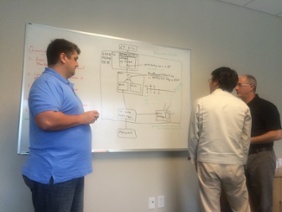 For a small company like Cimetrix, we can be proud of these accomplishments. We are very thankful to have had Jodi Juretich as CFO for these past eight years. Jodi managed the company’s financials and was responsible for preparing all of our SEC filings. For those of you not aware, the SOX laws include significant personal liability for the CEO and CFO in the event of any material errors or misstatements. As a result, while we had no idea how many people might read our SEC filings (other than the fact that we know our competitors all meticulously read each and every one), each filing had to be reviewed not only internally, but also by SOX compliance consultants, auditors, lawyers, and the board of directors. Significant management time and precious time with our board of directors was spent reviewing and approving SEC filings. As I hope everyone can appreciate, this represented a huge burden for a small company like Cimetrix. In addition to the hard costs that we estimated at approximately $250,000 per year, it is difficult to overstate the amount of energy in terms of management time and attention that went into reviewing and approving not only the financial statements, but the mandatory narratives for these quarterly SEC filings.
For a small company like Cimetrix, we can be proud of these accomplishments. We are very thankful to have had Jodi Juretich as CFO for these past eight years. Jodi managed the company’s financials and was responsible for preparing all of our SEC filings. For those of you not aware, the SOX laws include significant personal liability for the CEO and CFO in the event of any material errors or misstatements. As a result, while we had no idea how many people might read our SEC filings (other than the fact that we know our competitors all meticulously read each and every one), each filing had to be reviewed not only internally, but also by SOX compliance consultants, auditors, lawyers, and the board of directors. Significant management time and precious time with our board of directors was spent reviewing and approving SEC filings. As I hope everyone can appreciate, this represented a huge burden for a small company like Cimetrix. In addition to the hard costs that we estimated at approximately $250,000 per year, it is difficult to overstate the amount of energy in terms of management time and attention that went into reviewing and approving not only the financial statements, but the mandatory narratives for these quarterly SEC filings.
Since the introduction of SOX, many public companies have made the decision to go private, and we received a lot of advice over the years that Cimetrix would likewise be much better off as a private company. As you can imagine, however, there are many factors that go into such a decision. We always considered what is best for our shareholders, clients, and employees. Accordingly we were careful and patient in waiting for the right opportunity. From our perspective, that opportunity arose last year, which allowed us to go private without the need for external capital or any dilution to our shareholders. We believe it was an excellent use of the company’s cash to remove the ongoing “tax” of being a public company, which we accomplished in late 2014.
As I reflect back on our first year as a private company, there were a number of highlights in 2015.
-
The change in management focus has been remarkable. From the board-level to the daily and weekly operational meetings, the focus is now centered on clients, products, and strategy. How can we better serve our clients? How can we operate more effectively and efficiently?
-
Maybe the timing was coincidental, but Cimetrix also completed a major corporate organizational restructuring in early 2015. We involved ten of our key employees in an off-site workshop to map out the type of company we wanted to be going forward. Using an experienced coach and facilitator, we spent time reviewing and reaching agreement on “core” items including our shared vision and values, identification of our core customers, what is our promise to our clients, what is our long term “big hairy audacious goal,” and, equally important, what are the things we should stop doing. We identified the key functions of the company and the people with the best skills and experience to lead those functional areas. The result was a much flatter organization with opportunities for some of our most experienced engineers to assume more management responsibility. It was a very energizing and invigorating process that aligned the entire company on the path forward.
-
We also made the commitment to go through our product lines and address all outstanding issues. Over time, the number of product issues that were not urgent or high priority had been slowly building. We made the decision that in order to position the company for faster long-term growth, as well as to reflect our values and brand promise to our clients, we should refresh our current product lines and drive the number of outstanding issues down to zero. This strategy will greatly reduce the long-term costs of maintaining our product lines going forward, as well as further improve the quality and performance of our industry leading product lines. It was wonderful to see the cooperation of our different departments work through the full database of all reported issues and reach resolution. During 2015 we completed new Service Releases for our GEM and GEM300 product lines, which included SECSConnect, CIMConnect, and CIM300, that resolved all reported issues and significantly increased the test coverage for each product. Our Product Management group coordinated the effort to resolve all issues with appropriate stakeholders. Once the backlog of work was clearly identified, our Software Engineering group accepted the challenge and took great pride in doing the work they had wanted to do, but never had had the time, to improve our products and significantly increase the level of automated tests.
-
As part of the strategy to improve our customers’ experience using Cimetrix products, we expanded our customer support group into a “Client Training & Support” group with an enhanced staff of senior engineers. Their responsibility is to demonstrate Cimetrix products during the sales cycle, train new clients, and serve as proactive technical liaisons as our clients progress through the critical development cycle. Initial feedback from clients has been outstanding. In particular, I had one new client tell me that in his experience, it is natural for the level of support to fall off a bit after they place an order for a product. However, in the case of Cimetrix, we provided a very high level of attention and support during the sales cycle, and once they placed the PO, they were pleasantly surprised to see that the level of attention and support from Cimetrix actually increased. While they have had problems with other suppliers “over-promising and under-delivering,” their experience with Cimetrix has been overwhelmingly positive, as our software does what we say it will do, and we provide very responsive and passionate support with senior engineering staff.
-
We have been at the forefront of the new industry standards for “Interface A,” or its alias “Equipment Data Acquisition (EDA),” for over ten years. When these standards were initially conceived and driven by representatives from Intel and AMD, we thought these new standards made logical sense and would ultimately be adopted by the industry, but we had no idea how long it might take for these standards to be adopted. A large semiconductor foundry in the industry has become the leading user of EDA. Our strategy has been to work closely with this company and the large number of equipment makers that selected Cimetrix’ CIMPortal Plus product to meet the company’s requirements for EDA. While Cimetrix did this facilitation work on our own dime, we believe this investment has paid off handsomely as we’ve helped many of our clients achieve good success in this company's factories, and, as a result, we now have very appreciative clients all over the world that serve as solid references for Cimetrix and our EDA products. In parallel, our Sales and Account Management team has been evangelizing the benefits of EDA to other semiconductor manufacturers. The list of companies now implementing some aspect of EDA has grown to include industry leaders such as Globalfoundaries, Infineon, Inotera, Samsung, Toshiba, and TSMC. The biggest news was Samsung announcing plans for an EDA pilot project in 2016. In a recent briefing to local Korea-based equipment makers, it was reported that some large equipment makers such as Applied Materials and Tokyo Electron developed their EDA solutions in-house, but “most of the rest use Cimetrix products.” To respond to these opportunities, the Cimetrix Sales and Account Management group worked quickly to establish relationships, distribution channels, and local sales and support for Cimetrix products in Taiwan and Korea. While Cimetrix has great partners in Japan, we have learned that each country is different and customers prefer to receive support from companies within their own country, in their native language. Dave Faulkner and Alan Weber logged many miles this year explaining the best practices for EDA and establishing these very important relationships for Cimetrix, which we believe position Cimetrix to sell and support our products more effectively within these markets. In 2016 Cimetrix is scheduled to exhibit in industry trade shows in Korea, China, Taiwan, and Japan that we believe will lead to new clients in these growing markets.
-
Lastly, even though we are no longer required to publish SEC filings, we maintain the same high level of internal controls and fiscal discipline. The only difference is we don’t go through the seemingly endless quarterly reviews and narratives. The semiconductor capital equipment market is widely reported to have declined during 2015 and is expected to be flat for 2016. Cimetrix has noticed similar trends among our client base. During 2014, Cimetrix was profitable every quarter with total revenue in the $6 to 7M range with over $500,000 of adjusted EBITDA. For 2015, we continue to operate profitably on a quarterly basis and expect to have similar full-year financial results as 2014. We expect to end the year with close to $2M of cash and, of course, no debt.
Going Forward
Going forward, industry analysts predict a decrease in semiconductor capital equipment spending for 2016. Cimetrix has a number of irons in the fire that we hope will counteract the overall industry trends and enable us to grow next year. We have some major clients in adjacent markets that have the potential to contribute increased revenue. We also hope to get some traction from our efforts to add new clients and grow revenue in the Taiwanese, Korean, and Chinese markets. However, as we have learned over the years, it takes time to develop such new markets, so we are not planning to see large increases in revenue in the immediate future.
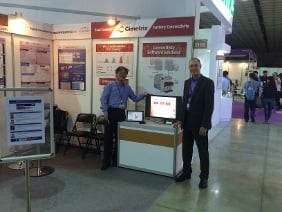
By working closely with our clients in semiconductor and adjacent markets, we have identified a number of opportunities for new products. We plan to continue to invest in our current product lines for GEM, EDA, and Equipment Control, as well as look for opportunities to develop new products in conjunction with industry leaders.
If I sound excited about the future for Cimetrix, it is because I am. We have a great team here at Cimetrix and we added a number of solid new team members during 2015. While we have made great progress, we are never satisfied, and will strive for continual improvement as we pursue closer relationships with our clients, improvements in our efficiency and effectiveness, and above all, building great products that help our clients be successful and perform well for those they care about.
I want to thank our clients for the faith and confidence they have placed in Cimetrix’ products and team members, our employees for their passion, dedication and commitment, and our shareholders for their patience that we believe will ultimately be rewarded.♦



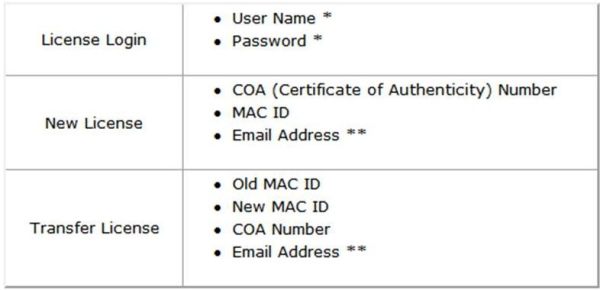
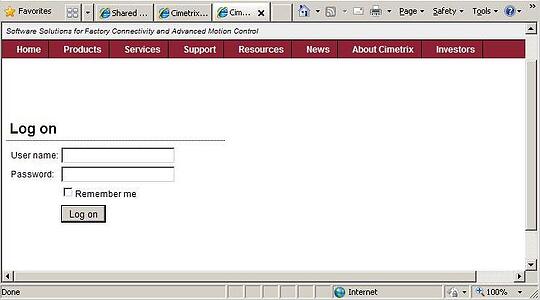
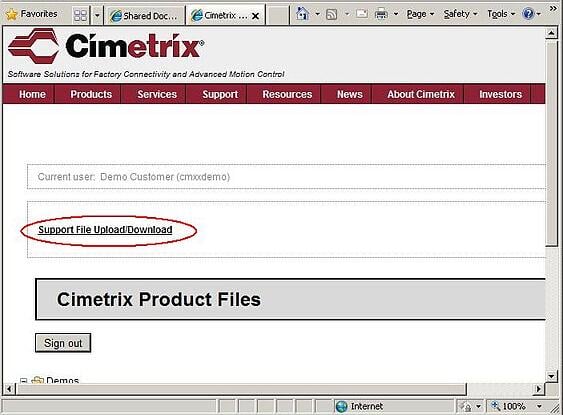
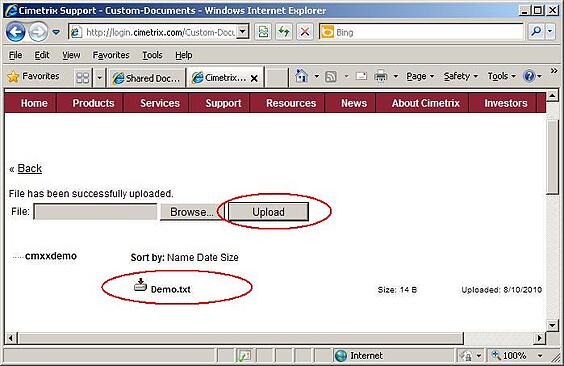




 When I confided to a long-time friend with whom I used to work in the financial arena at General Electric that I was thinking of returning to work after 20 years of raising a family, and that I would be doing Sarbanes-Oxley (SOX) compliance work for Cimetrix, she gasped, and blurted, “I am SO sorry!” I was pretty sure her dismay was not an indictment of me returning to work, nor to Cimetrix—it was all about SOX.
When I confided to a long-time friend with whom I used to work in the financial arena at General Electric that I was thinking of returning to work after 20 years of raising a family, and that I would be doing Sarbanes-Oxley (SOX) compliance work for Cimetrix, she gasped, and blurted, “I am SO sorry!” I was pretty sure her dismay was not an indictment of me returning to work, nor to Cimetrix—it was all about SOX.
